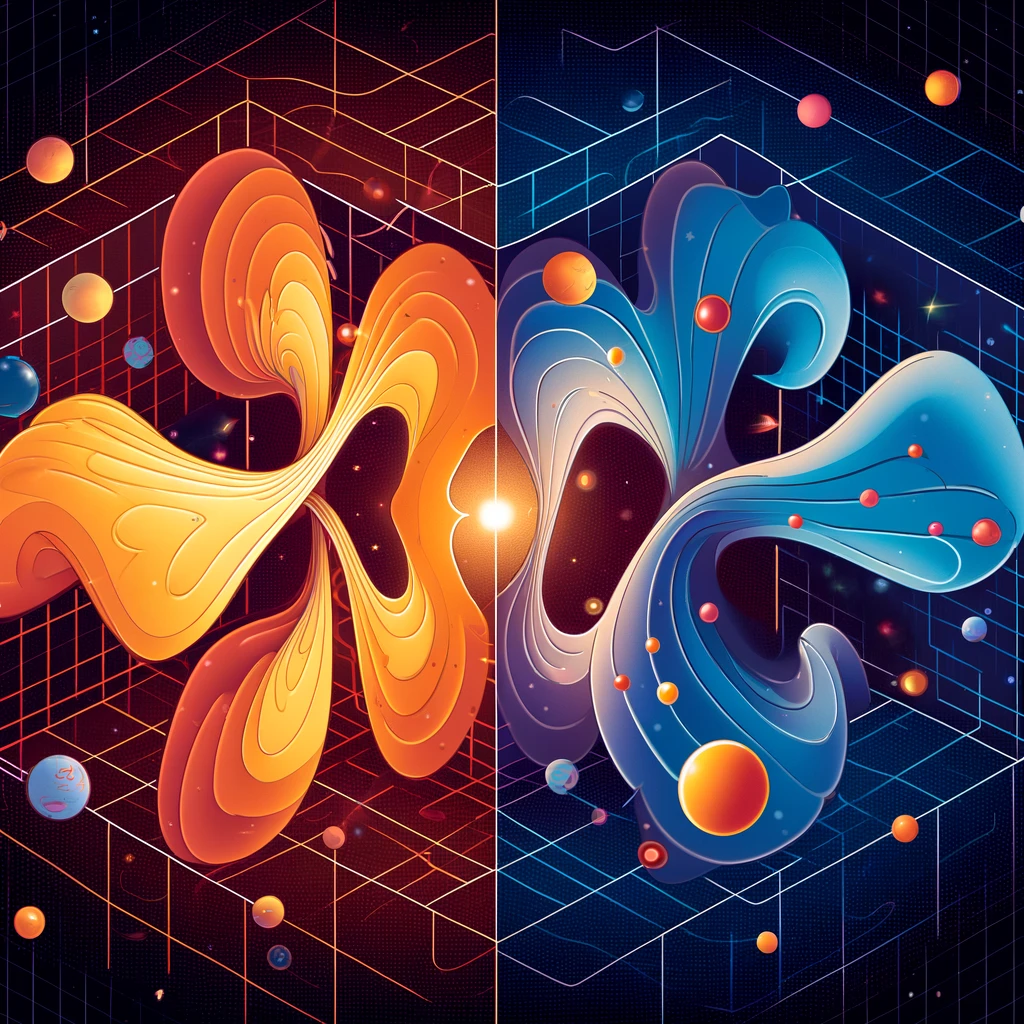
Demystifying the Quantum-Gravity Nexus: A Journey into the Heart of Classical-Quantum Dynamics
In the realms of physics, two vastly different worlds coexist: the predictability of classical gravity and the uncertainty of quantum mechanics. Bridging these realms has long been a quest for scientists, and a recent study (will download a pdf) by Jonathan Oppenheim and Zachary Weller-Davies takes a giant leap in this direction.
Their work, published in the Journal of High Energy Physics, explores a new class of theories where spacetime is treated classically while interacting with quantum fields. This innovative approach sidesteps many pitfalls of semi-classical gravity and offers a fresh perspective on the interaction between gravity and quantum mechanics.
The Quantum-Classical Interface: A Theoretical Breakthrough
The theory proposed by Oppenheim and Weller-Davies is revolutionary in its approach. It operates under the principle that while matter fields are quantum in nature, the gravitational field can be treated classically. This hybrid dynamic is fascinating because it respects the integrity of both realms—quantum fields retain their quantum characteristics, while gravity remains classical. The researchers used a mathematical framework known as Classical-Quantum (CQ) theory to develop their model. This theory is a complex mathematical construct that allows for the simultaneous existence of classical and quantum dynamics.
Gravity in the Quantum Age: The Significance of CQ Theory
What makes CQ theory groundbreaking is its ability to model the back-reaction of quantum fields on spacetime. In simpler terms, it can describe how quantum particles like photons and electrons influence the curvature of space and time. This theory has far-reaching implications in understanding black holes, where extreme gravity meets quantum phenomena, and in cosmology, where the mysteries of the early universe are deeply entwined with gravitational forces.
Breaking Down Complex Concepts: CQ Dynamics and Constraints
At the crux of Classical-Quantum (CQ) theory lies an intricate and crucial component: constraints. These are not mere mathematical curiosities; they are the safeguards ensuring the theory remains consistent and true to fundamental physical laws. To truly grasp their importance, one must delve into the heart of what these constraints mean and why they are indispensable in a theory that endeavors to merge the classical world of gravity with the enigmatic realm of quantum mechanics.
Constraints: The Pillars of Consistency in CQ Theory
Constraints in CQ theory are akin to the rules of a game that govern how pieces move on a chessboard. They are mathematical conditions that must be satisfied for the theory to make physical sense. In the context of CQ theory, these constraints ensure that the interactions between classical gravity and quantum fields don’t lead to paradoxical or unphysical situations.
One way to visualize this is to think of classical gravity as a canvas, providing a backdrop for the quantum fields. The constraints ensure that this canvas remains intact and consistent as quantum entities play out their probabilistic dance upon it.
Spatial Diffeomorphism Invariance: A Fundamental Principle
Central to understanding these constraints is the principle of spatial diffeomorphism invariance. This concept, while complex, is fundamental to both general relativity and CQ theory. It states that the laws of physics should remain invariant (unchanged) no matter how you stretch, squeeze, or otherwise distort space.
Imagine you have a rubber sheet representing space. You can pull it, twist it, or crumple it, but the physical laws governing the objects residing on this sheet should not change. This principle is crucial because it upholds the idea that the laws of physics are universal and not dependent on the observer’s perspective or the space’s shape.
In the realm of CQ theory, spatial diffeomorphism invariance ensures that the interplay between the classical and quantum components respects the uniformity of physical laws across the varied tapestry of spacetime. This uniformity is vital for maintaining the theory’s coherence and reliability in predicting outcomes in scenarios where gravity interacts with quantum fields.
The Role of Constraints in Preserving Diffeomorphism Invariance
The constraints in CQ theory enforce this spatial diffeomorphism invariance. They are the mathematical expressions that ensure this principle is not violated when quantum and classical realms interact. These constraints check and balance the equations governing the CQ dynamics, ensuring that the outcomes of these interactions are realistic and physically plausible.
In practice, these constraints manifest as specific conditions in the mathematical formulations of CQ theory. They restrict the possible configurations and evolutions of the classical-quantum system to those that respect the invariance of physical laws under spatial transformations. Without these constraints, the theory would be prone to inconsistencies, rendering it unreliable for practical application.
Exploring the Uncharted: Post-Quantum Theories of Gravity
Oppenheim and Weller-Davies’s work is a pioneering step towards what they call “post-quantum theories of gravity.” In these theories, information loss and decoherence—a process where quantum systems lose their quantum properties—are inevitable outcomes of the classical-quantum interaction. These features offer new insights into how quantum information behaves in the presence of gravity, a question that has puzzled scientists for decades.
Future Horizons: Where Do We Go from Here?
The journey into the quantum-gravity nexus is just beginning. While the CQ theory provides a robust framework, the quest to fully integrate gravity into the quantum world continues. Future research will undoubtedly build upon this foundation, edging us closer to a comprehensive theory of quantum gravity.
Unlock the Secrets of Science:
Get ready to unlock the secrets of science with ‘This Week in Science’! Our newsletter, designed specifically for educators and science aficionados, delivers a weekly digest of revolutionary research, innovative discoveries, and motivational tales from the scientific frontier. Subscribing is your key to a treasure trove of insights that can revolutionize your approach to teaching and learning science. Sign up today at no cost and start a journey that deepens your understanding and passion for science.
About the Author
Jon Scaccia, with a Ph.D. in clinical-community psychology and a research fellowship at the US Department of Health and Human Services, is renowned for his expertise in public health systems and quality programs. He specializes in implementing innovative, data-informed strategies to enhance community health and development. Jon’s significant contribution to public health is underscored by his creation of the R=MC² readiness model, which aids organizations in effectively navigating change. And he started 20 years ago in astrophysics!



